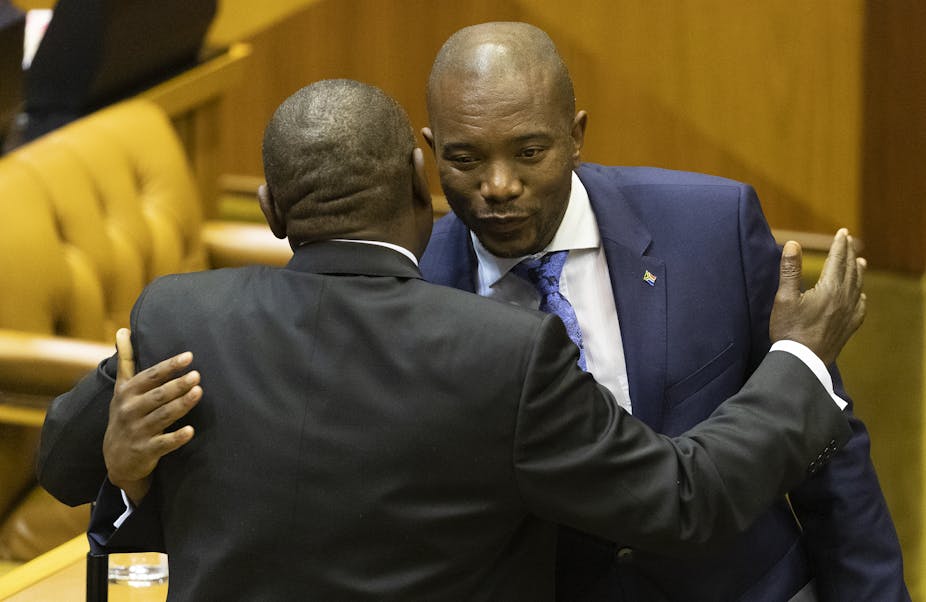Is there the possibility that political centrists in South Africa’s governing party, the African National Congress (ANC), and its main opposition party, the Democratic Alliance (DA), could merge?
The question arises because there could be merit in the ANC under President Cyril Ramaphosa shedding elements obstructive to economic reform, while the DA under Mmusi Maimane could free itself from the baleful influence of an alleged old guard of whites seeking to impose an inappropriate version of liberalism upon a party attempting to widen its appeal to black South Africans.
Such a realignment of a governing party with the opposition would not be the first in South African history. Back in 1931, Prime Minister JBM Hertzog, leader of the ruling National Party, was facing a political crisis. His support was eroding as South Africa confronted the Depression.
Compounded with the worst drought in the country’s history, the Depression had seen unemployment reach crisis proportions, especially among poor Afrikaners – a major constituency of the National Party. Hertzog responded to the loss of political support by forging a coalition with the South African Party of General Jan Smuts, who joined him in wanting to rescue the economy.
The fortunes of the economy were strongly linked to the gold standard. Aided by the belated decision to follow Great Britain by taking South Africa off the gold standard, the economy soon began to show signs of recovery.
Hertzog’s and Smuts’ settlement of their political differences culminated in the “fusing” of their parties into the United Party in 1934.
However, this alienated so-called purists within the National Party under DF Malan. They crossed the floor into opposition, retaining the name and claiming the legacy of the National Party.
Ramaphosa and Hertzog
What has this ancient history got to do with 2019? Well, quite a lot, as the situation facing Ramaphosa today is not that different from Hertzog’s in 1931. Ramaphosa, too, faces an economic crisis and a loss of popular trust and support.
But there is also an important difference. In 1931 the South African parliament was operating under the Westminster system (minus black participation). As long as Hertzog and Smuts could take their parliamentary supporters with them, they could join their parties.
They did this by agreeing that the sitting members of parliament (MPs) would keep the seats they had won in the 1929 election. Today it is far from clear that Ramaphosa and Maimane could combine in the same way.
Under the Westminster-type system in 1931, MPs represented political parties, yet were elected by constituencies. If for any reason they chose to leave their political party, they retained their seats in parliament until the next election. At this point they would need to win reelection. And, as some of Malan’s supporters discovered in 1934, by opposing their former party they risked defeat.
MPs today lack that degree of independence. South Africa’s Constitution lays down that
A person loses membership of a legislature … if that person ceases to be a member of the party which nominated that person as a member of the legislature (Annexure A, para. 13, 23A (1)).
This implies that the political dynamic of coalition or “fusion” lies outside rather than inside the parliamentary arena. Put another way, even if Ramaphosa and Maimane both commanded majorities for coalescence among their parties’ MPs, the party machineries outside parliament might deprive pro-coalition MPs of their party memberships.
It would seem to follow that the MPs would then lose their seats in parliament and be replaced by individuals nominated by the party.
To achieve coalescence, control of party machinery appears to be more important than MPs’ support. Hertzog and Smuts dominated their parties in 1931 in a way that neither Ramaphosa nor Maimane does in 2019.
Both Ramaphosa and Maimane would need to win major battles outside parliament before securing a working alliance within parliament. There’s no guarantee that they could do either of those things. In any such political crisis, the losers would resort to the courts, not only to win their side of the political battle but to win control of their parties’ assets.
Difficult mission
It doesn’t mean that the formation of a centrist political alliance is impossible. But it does suggest that Ramaphosa would need to win a confrontation with the faction allied to his predecessor and nemesis, former President Jacob Zuma, that continues to occupy key positions in the ANC. Then he would have to try to bring labour federation Congress of South African Trade Unions and the South African Communist Party to the table.
Equally, it might demand that Maimane retain his leadership of the DA in the looming battle at the party’s Federal Council, and show he retains majority support among the party’s membership.
It all makes Ramaphosa’s ability to do a Hertzog much more difficult than it sounds at first.

